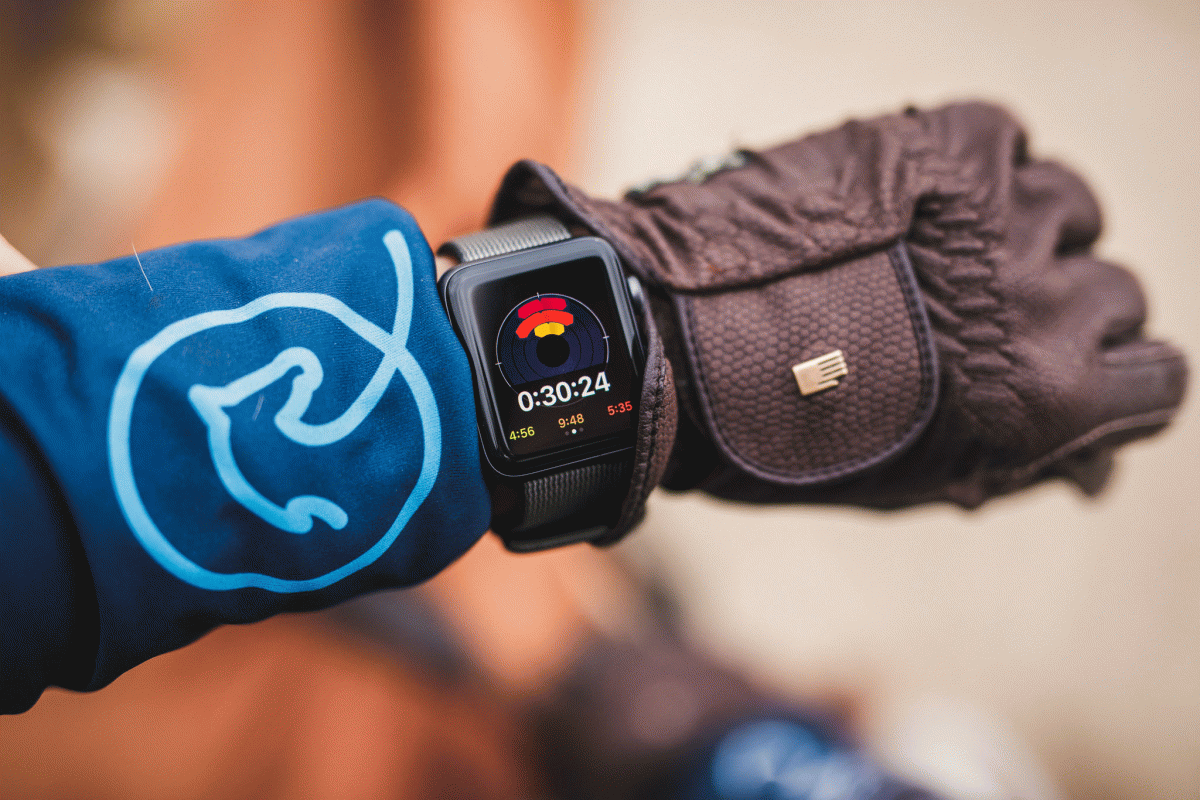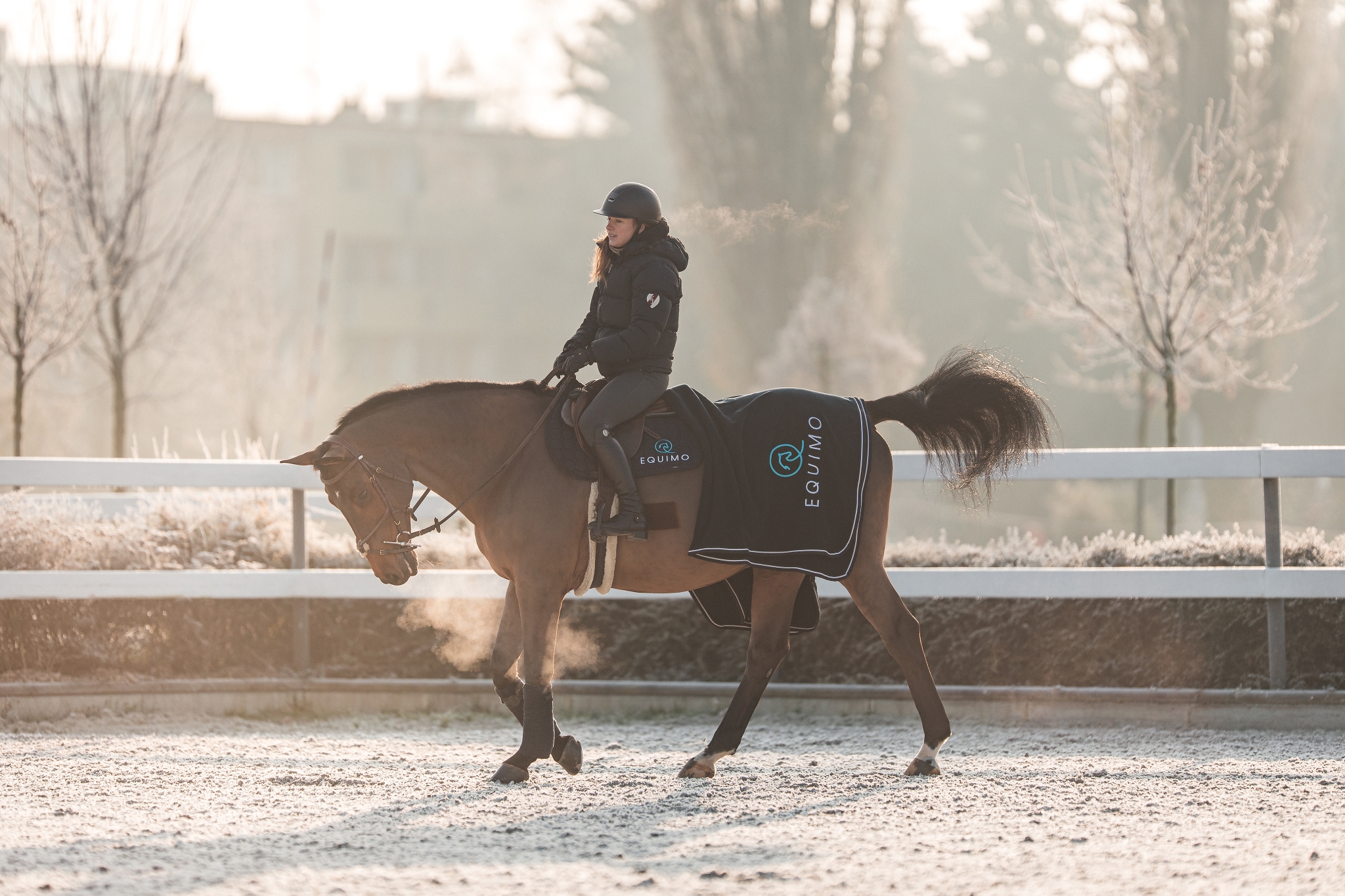
Time either seems to pass too slow or to fly fast like a thoroughbred on a racetrack during certain activities, riding included. Answer yourself this: do you always know for sure how long you have been riding? There is no shame in not being certain; that is why our real-time tracking has been developed.
Whether you are riding a horse recovering from an injury or preparing a horse for a show, it is helpful to know your current session's exact time. The real-time tracking shows you your progress through the horseshoe graph and its symmetry rings: the time spent in each gait and the movement percentage to left and right.
Knowing the time of your session can be helpful in several ways. You should pay special attention to a warm-up in walk before you start to trot in temperatures below zero. As the weather is cold, a horse's muscles are stiff, and by warming them properly, you prevent soreness and injuries. The same thing applies in trot – some riders quickly skip onto cantering, but thanks to your live analysis, you can control yourself to trot for long enough before starting to canter. During a session, you may think much time has passed while it's only been several minutes or vice versa. Your real-time analysis on your smartwatch or mobile phone tells you the truth.

Many riders plan their sessions beforehand, according to a stage of their horse's training. Sometimes, they aim for a short flat, while on the other day, they may want to give their horse a good gallop outside. The real-time analysis is here to help you achieve your plans and goals– be it a dressage session, jumping training, or a hack.
What about the horseshoe graph and its symmetry rings? "I don't need it. I provide balanced rides for my horses, "many riders say. That might be true, of course. But chances are, you are slipping at least a bit. Most of us feel more comfortable in one direction (left-handed or right-handed canter, for example), and horses are no exemption. Combine a rider who prefers left-handed movement with a horse with a canter more comfortable to the left, and the problem might be born.
By checking your symmetry rings now and then, you make sure your horse has a balanced workout and burdens muscles evenly. A one-time imbalance is probably not a disaster, but ride unevenly for a longer time, and your horse will develop muscles accordingly, along with potential issues.
If you ride with your phone, each gait's time and symmetry will be visible in your live analysis. If you prefer not to ride with your device, you may start the session and then put your mobile away. As long as you grab your phone for the several last minutes (as you cool your horse down, for example), your analysis will be complete after the workout. However, in this case, your live analysis will show only the session's time, and you will have to wait for the symmetry rings after you have finished your ride.